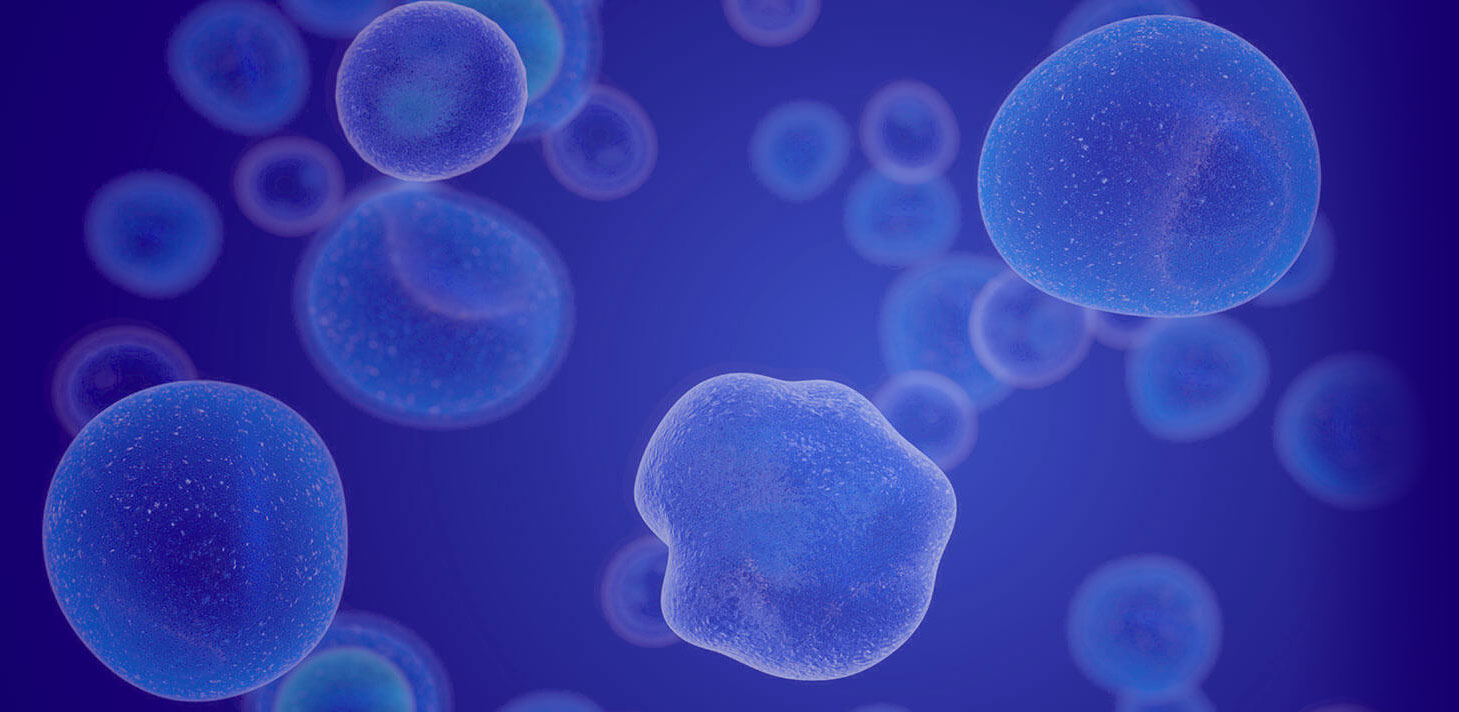Stem Cells for Knee Injury
Conveniently located to serve the areas of Greenville, SC, Spartanburg, SC, Columbia, SC, Anderson, SC and Asheville, NC
Using stem cells for knee injuries is an innovative treatment that leverages our body’s own cells to regenerate damaged and injured knee joints.

If you play sports, you are probably aware of knee injuries that include anterior cartilage ligament (ACL) injuries, torn meniscus, and more. ESPN often reports on athletes sustaining a knee injury. The rate of ACL injuries in the U.S. is 1 in 3000.[1]
Contents
- 1 Knee Injury is Among the Most Common Injuries
- 2 What is Stem Cell Therapy?
- 3 Benefits of Stem Cell Therapy for Knee Injury
- 4 Candidates
- 5 What injuries can stem cells treat?
- 6 Private Knee Injury Consultation in Greenville, South Carolina
- 7 The Stem Cell Therapy Procedure
- 8 Recovery
- 9 Results
- 10 What is the Cost of Stem Cell Therapy for the Knee in South Carolina?
- 11 Other Stem Cell Therapies
- 12 FAQ
- 13 References
Knee Injury is Among the Most Common Injuries
If you are one of those who’s had an ACL injury, you know how debilitating they can be. Over 100,000 ACL reconstructions are performed every year in the U.S. Another extremely common knee injury is a torn meniscus. ACL and meniscus injuries happen frequently to young active people. Other afflictions of the knee include osteoarthritis and tendonitis that can result from aging.
Fortunately, recent studies indicate that stem cells offer a promising treatment for knee injuries.[2][3] You don’t have to rely solely on knee reconstructions that might leave you facing arthritis early in life.
Stem cell therapies are an effective remedy for the most common knee injuries. Dr. Haasis, of the Daisy Institute, stays at the forefront of stem cell innovations. Double board-certified in anesthesiology and pain management, Dr. Haasis has practiced medicine for over 25 years. Currently, he devotes himself to the cutting-edge practice of stem cell therapy. If you have a knee injury contact Dr. Haasis.
What is Stem Cell Therapy?

Stem cells are the biological building blocks of our bodies. All other specialized cells originate from stem cells. You can think of them sort of like a comprehensive box of LEGOs that can be used to build any specialized project from cars and skyscrapers to spaceships and wizard castles. Researchers discovered they can coax stem cells into growing into healthy cells for any part of the body. These healthy cells can then replace damaged or diseased cells, which helps to repair the function of that part of the body.
Stem cell therapy is often termed regenerative medicine for the ability of stem cells to replace and regenerate damaged and diseased tissue in the body.
How do you get the stem cells for therapy?
Mesenchymal stem cells (MSC’s) are stem cells found in our body’s bone marrow, adipose tissue (fat cells), and synovial tissue (sheaths around tendons and joints). Stem cell therapy involves harvesting adult MSCs using specialized techniques. The MSCs are then purified and concentrated before they are injected back into a patient’s body.
Benefits of Stem Cell Therapy for Knee Injury
- Promotes cartilage growth
- Decreases inflammation and pain
- Improves joint mobility
- Delays surgical knee replacement or reconstruction
- Requires no general anesthesia
- Requires little or no pain medication
Candidates
Ideal candidates for stem cell treatment are those with knee injuries that do not require major reconstruction. Patients should have realistic expectations. For instance, the damage from a completely blown out kneecap could not be entirely repaired using our knowledge of stem cell therapy. However, current research suggests a lot of potential in using stem cells to regenerate common knee injuries.
What injuries can stem cells treat?
Ligament Injuries
Ligament injuries can happen during a wide variety of sports including skiing, football, soccer, and hockey. ACL injuries are the most common ligament injuries of the knee but they aren’t the only type of ligament that can benefit from stem cell treatments.[4] The ACL is usually torn by sudden twisting of the knee. Posterior cruciate ligament (PCL) injury is an impact injury caused by jarring incidents such as a car accident. Medial collateral ligament (MCL) injuries are caused when the knee suffers a hit from the outside of the knee. MCL injuries often occur in football or hockey players.
Cartilage Injuries
The meniscus is knee cartilage in the knee that separates and shields the shinbone from the thighbone. A torn meniscus is a common injury in tennis or basketball. The injury can occur with any sudden rotation and twist of the knee. Estimates are between 100,000 and 200,000 meniscus injuries occur each year in the U.S.
Osteoarthritis (OA)
OA is a condition where the cartilage in any joint, including the knee, breaks down over time. Osteoarthritis is the most common form of arthritis. OA can cause inflammation, pain, swelling, and a lack of mobility and flexibility in the joint.
Tendonitis
Tendonitis is irritation to the tendons that occurs when a tendon suffers from overuse. In the knee, the condition is often called “jumpers knee” as it results from the frequent impact of jumping and landing. It’s most common in basketball and volleyball players.
Private Knee Injury Consultation in Greenville, South Carolina
If you are considering stem cell therapy, it’s important to find a trusted doctor well versed in all the intricacies of regenerative medicine. The double board-certified Dr. Haasis received a fellowship training in pain management. Fellowship training indicates the highest level of training in a specified field of medicine a physician can receive. Additionally, Dr. Haasis trained in medical acupuncture at the Helms Medical Institute and UCLA’s School of Medicine. Your consultation with Dr. Haasis will involve a discussion about the type of knee injury you’ve sustained. Dr. Haasis shall then assess your condition and determine if stem cell therapy is suitable for the treatment of your knees. If you want to learn more, contact Dr. Haasis to schedule a consultation.
The Stem Cell Therapy Procedure
Stem cell therapy for the knees is minimally invasive. In general, a doctor will harvest stem cells from bone marrow using custom-designed needles. A doctor can also harvest from adipose or fat cells using specialized liposuction equipment. A doctor then places the harvested tissue in a centrifuge which spins the material. The centrifugal process concentrates the harvested tissue to maximize the number of stem cells in the serum. After concentration, a doctor purifies the tissue. Once purified, a doctor will inject the distilled batch of stem cells into the location of the knee injury.
Recovery
Stem cell therapy offers a quick recovery time. Typically patients can return to normal activity within a few weeks. Ask Dr. Haasis how long until you can return to playing sports or other high-intensity activity as recovery time will vary for each injury.
Results
While stem cell therapy for the knees is still relatively new, recent studies provide many positive indications for the future. Reviews of preliminary studies show that stem cell injections to treat knee injuries are safe with a low risk of complications.[5] Without the side-effects of many current drug-based therapies, MSC show many advantages for treating damaged cartilage in OA patients.[6] The reviews show decreased pain with improved functionality and increased cartilage volume. These results are echoed in studies on using MSCs to repair a torn meniscus.[7] Current research in stem therapy for ACL tears also suggests MSCs helps regenerate ligament tissue in the knees. [8]
What is the Cost of Stem Cell Therapy for the Knee in South Carolina?
To determine the cost of stem cell therapy for your injury, contact Dr. Haasis at the Daisy Institute to set up a consultation. After he reviews your injury, he can determine the pricing for your stem cell therapy.
Other Stem Cell Therapies
If you have other areas that are injured and might benefit from stem cell therapy make sure to discuss them with Dr. Haasis. Other popular stem cell treatment areas are the elbow, the back, and the shoulder.
FAQ
How long do stem cell injections last?
With current technology, injected stem cells will keep producing new cells in the injured location for about a year.
References
- Ong, E., Chimutengwende-Gordon, M., & Khan, W. (2013). Stem Cell Therapy for Knee Ligament, Articular Cartilage and Meniscal Injuries. Current Stem Cell Research & Therapy, 8(6), 422-428. doi:10.2174/1574888×1130800059
- Kouroupis, D., Kyrkou, A., Triantafyllidi, E., Katsimpoulas, M., Chalepakis, G., Goussia, A., . . . Fotsis, T. (2016). Generation of stem cell-based bioartificial anterior cruciate ligament (ACL) grafts for effective ACL rupture repair. Stem Cell Research, 17(2), 448-457. doi:10.1016/j.scr.2016.04.016
- Melrose, J. (2019). Novel Approaches in Meniscal Repair Utilizing Mesenchymal Stem Cells, New Generation Bioscaffolds and Biological Adhesives as Cell Delivery Vehicles. Meniscus of the Knee – Function, Pathology and Management. doi:10.5772/intechopen.80552
- Causes of Knee Ligament Injuries. (2017, September 11). Retrieved June 22, 2020, from https://stanfordhealthcare.org/medical-conditions/bones-joints-and-muscles/knee-ligament-injury/causes.html
- Freitag, J., Bates, D., Boyd, R. et al. (2016). Mesenchymal stem cell therapy in the treatment of osteoarthritis: reparative pathways, safety and efficacy – a review. BMC Musculoskelet Disord. 17: 230. https://doi.org/10.1186/s12891-016-1085-9
- Wang, A., Feng, Y., Jia, H., Zhao, M., & Yu, H. (2019). Application of mesenchymal stem cell therapy for the treatment of osteoarthritis of the knee: A concise review. World Journal of Stem Cells, 11(4), 222-235. doi:10.4252/wjsc.v11.i4.222
- Centeno, C. J., Busse, D., Kisiday, J., Keohan, C., Freeman, M., & Karli, D. (2008). Regeneration of meniscus cartilage in a knee treated with percutaneously implanted autologous mesenchymal stem cells. Medical Hypotheses, 71(6), 900-908. doi:10.1016/j.mehy.2008.06.042
- Rustiasari, Ukhti & Zein, Muhammad. (2019). Stem Cell Therapy in Anterior Cruciate Ligament (ACL) injury. 2nd Yogyakarta International Seminar on Health, Physical Education, and Sport Science. doi: 10.2991/yishpess-cois-18.2018.150.


